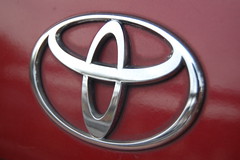Vehicle Manufacturers Are Leading Intelligent Transportation Systems Efforts with Obstacle Detection Systems Launching in 2009, According to ABI Research
(Source: Fox Business)
Intelligent Transportation Systems (ITS) have been under development for more than a decade. While the promise of road-infrastructure based traffic management is still years away, some car manufacturers are moving ahead with autonomous radar-based obstacle detection systems increasing the safety of both drivers and pedestrians.
“Vehicle manufacturers are mainly interested in active safety as a new differentiator,” says ABI Research Practice Director Dominique Bonte. “However, avoiding accidents has a huge impact on traffic congestion levels, the reduction of which remains the primary goal of ITS.”
Toyota is planning to add a millimeter-wave radar system to some of its car models in Japan in 2009. The driver is warned about potential side and front collisions and when a crash is imminent automatic braking, seat belt retraction and air bag deployments are initiated. In the US a similar pre-collision system will be available on the 2010 Toyota Prius as an option. A similar feature was announced by Hyundai at CES. However, the current automotive slump will delay the adoption of active safety as a standard option across all brands.
To realize the benefits of integrated traffic management ITS requires vehicle-to-vehicle and vehicle-to-infrastructure communication. While many successful tests based on the Dedicated Short Range Communication (DSRC: undefined, undefined, undefined%) protocol are ongoing in Japan (ITS-Safety 2010 project), Europe (ERTICO, CAR 2 CAR Communication Consortium) and the US (DoT’s IntelliDriveSM project), full rollout is not expected before 2015.
Click here to read more.




